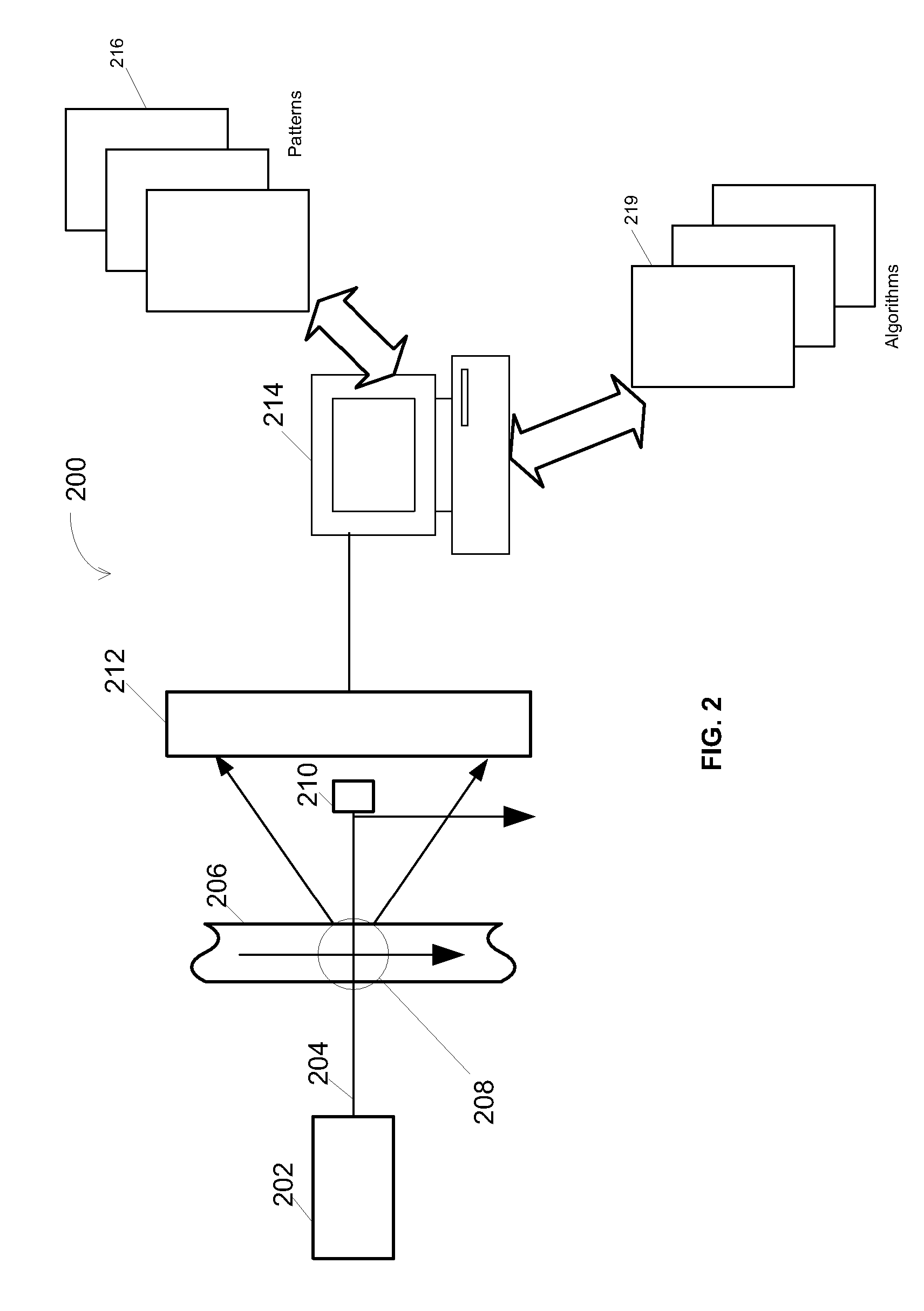Systems and methods for a high capture angle, multiple angle light scattering (MALS) instrument
a technology of capture angle and light scattering, applied in the field of systems and methods for high capture angle, multiple angle light scattering (mals) instruments, can solve the problems of giardia forming oocysts or cysts, affecting the detection accuracy of microbial contaminants, and not being able to detect microbial contaminants in real-time and on-line to provide a warning
- Summary
- Abstract
- Description
- Claims
- Application Information
AI Technical Summary
Benefits of technology
Problems solved by technology
Method used
Image
Examples
Embodiment Construction
.”
BRIEF DESCRIPTION OF THE DRAWINGS
[0014] Features, aspects, and embodiments of the inventions are described in conjunction with the attached drawings, in which:
[0015]FIG. 1 is a diagram illustrating an example embodiment of a particle detection system;
[0016]FIG. 2 is a diagram illustrating another example embodiment of a particle detection system;
[0017]FIG. 3A is a picture of B. suptilis spores;
[0018]FIGS. 3B and 3C are pictures illustrating example optical signatures that can be generated by the systems of FIGS. 1 and 2 for the B. suptilis spores of FIG. 3A;
[0019]FIG. 4A is a picture of a ball of plastic spheres;
[0020]FIGS. 4B and 4C are pictures illustrating example optical signatures that can be generated by the systems of FIGS. 1 and 2 for the ball of plastic spheres of FIG. 4A;
[0021]FIGS. 5-7 are diagrams illustrating a technique for using illumination incident at an angle in a light scattering detection system, such as the systems of FIGS. 1 and 2;
[0022]FIG. 8 is a d...
PUM
| Property | Measurement | Unit |
|---|---|---|
| angle | aaaaa | aaaaa |
| size | aaaaa | aaaaa |
| diameter | aaaaa | aaaaa |
Abstract
Description
Claims
Application Information
 Login to View More
Login to View More - R&D
- Intellectual Property
- Life Sciences
- Materials
- Tech Scout
- Unparalleled Data Quality
- Higher Quality Content
- 60% Fewer Hallucinations
Browse by: Latest US Patents, China's latest patents, Technical Efficacy Thesaurus, Application Domain, Technology Topic, Popular Technical Reports.
© 2025 PatSnap. All rights reserved.Legal|Privacy policy|Modern Slavery Act Transparency Statement|Sitemap|About US| Contact US: help@patsnap.com



